Sunday is church day, but this Sunday in Bamenda is super church day. The attendants of the cathedral walk in procession and sing cheerfully behind the priest on the main avenue of the city. The best outfits of the wardrobes are out.
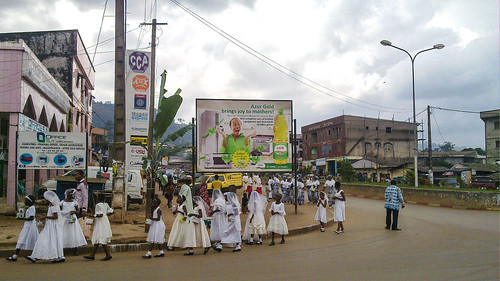
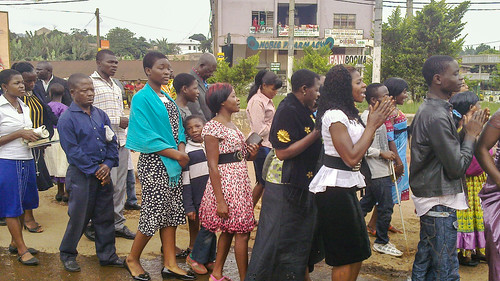
This Sunday is also the day Cyril joins me. One year ago, we had cycled together from France to Spain via Andorra over the Pyrénées, and this year he flew to Yaoundé to cycle through Gabon until Congo. We first find a welding workshop to repair his Tubus front rack, broken in a nasty pothole. We also get to eat real potatoes! They are called Irish potatoes. Most of the times, when I find or hear about potatoes, it refers to the sweet potato.
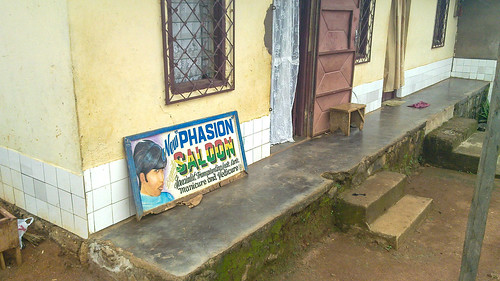
He brought me pedals (mines had broken earlier in Cameroon) and a 3-speed chainring. It is not really compatible with mine but I need to change the whole transmission. My chain has been doing a small clicking noises and it actually gained 1% in length! The 100-link KMC (Rohloff compatible chain) is now exactly 1 link longer.
I had already reversed my Rohloff sprocket after 10’000 kilometers of use, and now at 19’000 km, it is time for a new one.
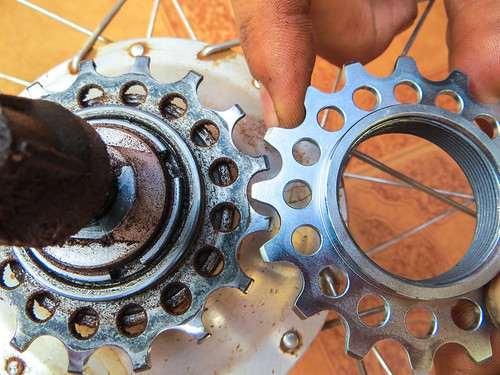
The old one has been worn 10’000 km on one side and 9’000 km on the other side. All the (high quality) steel removed on the teeth is a direct consequence of my legs muscles! Nevertheless, I have seen pictures of sprockets teeth worn until it becomes a ninja weapon.
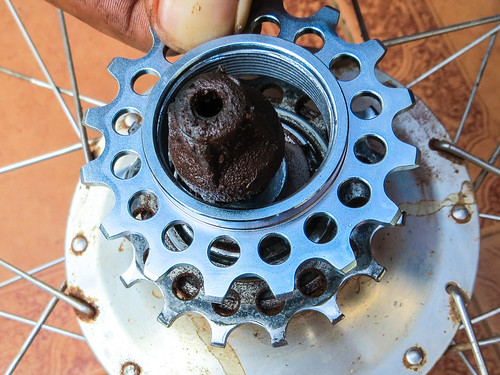
The transmission on the Rohloff bike is very simple: 1 sprocket (16 teeth), 1 chain and 1 chainring (42 teeth). It is better to change everything at the same time, but I am not sure what to do with the chainring, if it can run for longer. It is a Lasco CF12 and it seems, like the sprocket, reversible. It is well known that a Rohloff sprocket can be reversed to double its lifespan, but I don’t find reliable information about chainrings.

Well, we try, and it works! The chainring is almost identical on both sides. Now reversed, it presents to the chain the opposite and clean side of the teeth, so it is like a new one!
There is actually one little concern: if the steel of the sprocket completely disappeared with usage, like if the chain had been digging into the teeth, it didn’t for the chainring. It actually squeezed up against each tooth. The teeth are “fatter”, taking up all the space between the inner plates of the chain links.
We find tools at the nearest car mechanic and file them down to make them slim again. Now it is really like a new chainring.
To sum up the maintenance needed with a Rohloff speedhub:
– 1 oil change kit every 5’000 KM (but the hub should still work well with a less careful monitoring)
– 1 sprocket every 20’000 KM, reversible at half-life (and it is surely pushable until 15’000 KM on each side)
– 1 chainring every 40’000 KM, possibly reversible at half-life (it must depend on the quality)
– 1 chain every 10’000 KM, or more frequently, depending on the quality, the servicing, the presence of a chain case …
It is quite easy, but the problem lies in procuring good quality products and Rohloff-specific items away from the first world.
Our plan is to head down to Yaoundé without taking the main road via Bafoussam, but via the small dirt roads of the Foumban sultanate. First, I must cycle again the southern part of the ring road until Jakiri, 100 km of steep and scenic roads I have cycled already.

There is something annoying me a lot: I feel resistance in the hub. My pedals turn with the freewheel and they shouldn’t. When we changed the sprocket, forcing on the gear without the proper tools (with a homemade chain whip), I heard a “clac”. I hope it is nothing serious as the servicing of the hub can only be done in Germany. The downside of this low-maintenance piece of technology is that if anything serious happens, it must be sent back to a Rohloff dealer (who may send it later to Germany). The only dealer in Africa is in South Africa. If there is friction in the hub and it uses 5% or 10% more energy out of my legs, it won’t be fun at all.
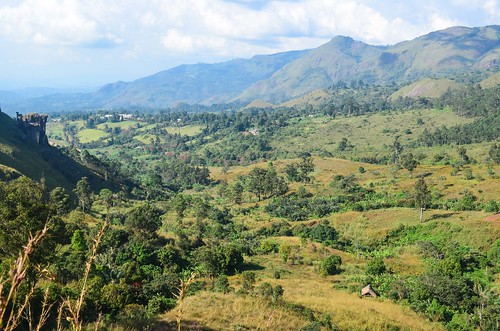
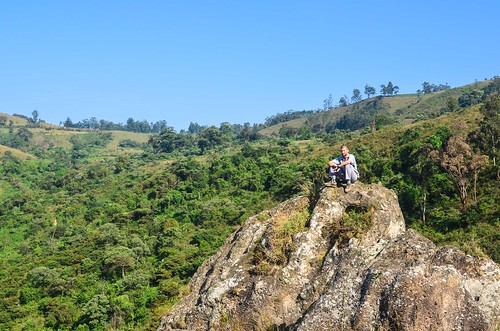
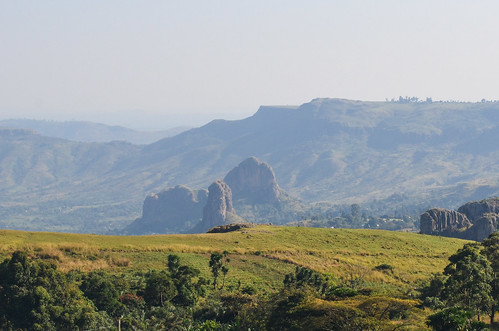
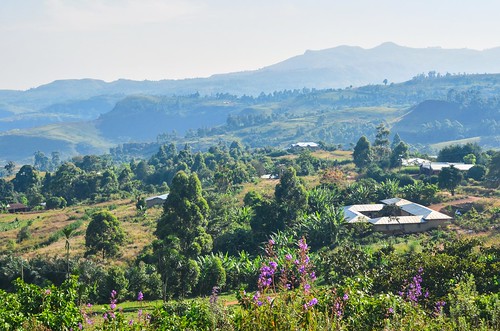
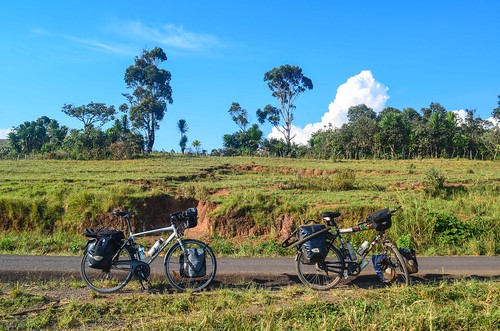
We pay a visit to Abraham in Sagba and hike up the Sabga hill. The views are even prettier than during the first time. There is an adventurous cow herd that somehow managed to climb the hill as well. But when the cows start running after us, they have to stop as they cannot take the steep downhill.
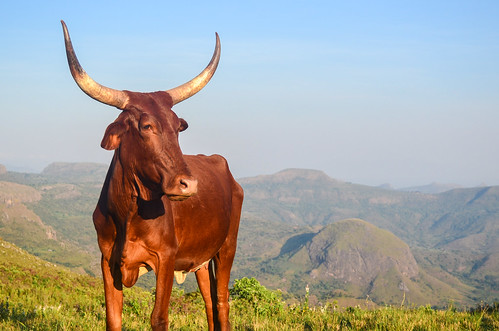
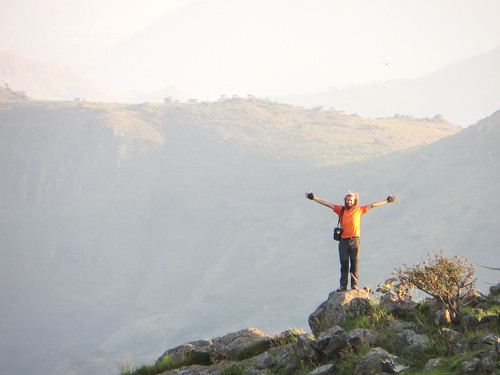
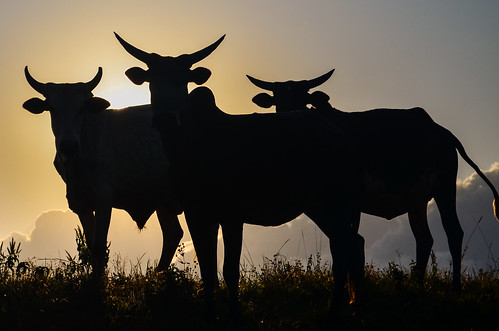
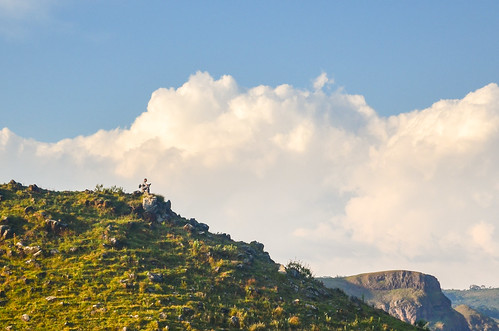

It is always a pleasure to wake up in a tent without roosters, without rain, without an unbearable heat, but with nice views instead.

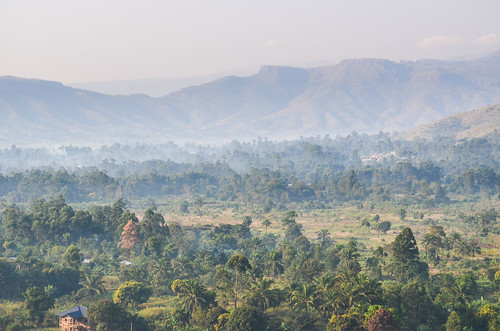
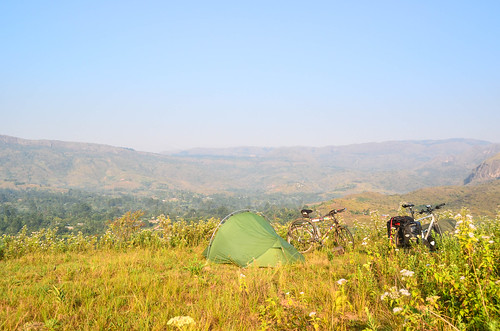
Leaving Bamessing for Ndop, we just stop for a liter of palm wine and continue on the way to Babungo.
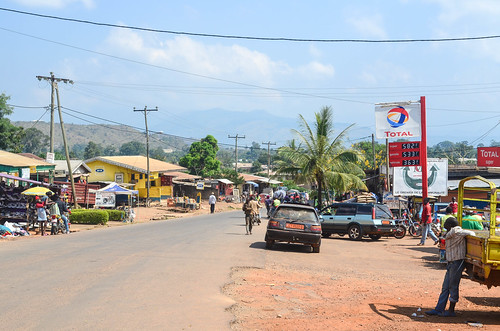
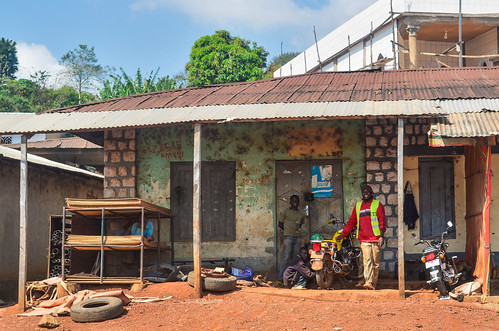
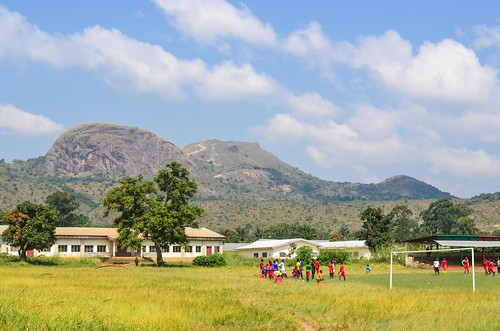
One benefit of cycling together is that we can make pictures of each other on the bike.

The highlight of our second day is the visit of the Babungo Fon’s palace. The Fon is the local ruler, like a small king, or a super chief-of-the-village. I have no photos of the inside because of the rules: it is 2000 CFA for the visit of the one room, and an additional 5000 CFA (7.5 €) for taking pictures. This is a room similar to the room of the palace in Kumbo: a throne and many seats, where the Fon delivers his advice to the locals visiting him.


It is not uncommon to charge an indecent price called “picture fee” in any place with a small tourism potential, because they know foreign visitors have money and like to take pictures with a camera. On the other side, locals are not bothered and will, at most, snap with their phone.

When we ask the co-wife of the late Fon the reason for charging 5000 CFA for photography limited to one room, she replied naturally that “we need money because you see, the Fon is not working, and we need to support all the family, etc“. Well, he is indeed a local king. The money is probably needed also to fuel the two 4×4 parked in the palace court.
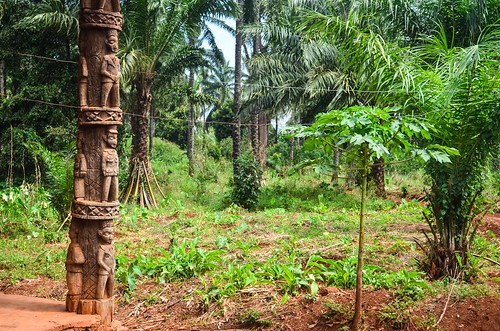
The adjacent museum is more interesting. It was built by Italian researchers. We learn the actual Fon, ruling since 1999, is 36 and is the 25th generation. Many rituals are described, it is quite a work over a fondom of around 2 inhabited square kilometers.
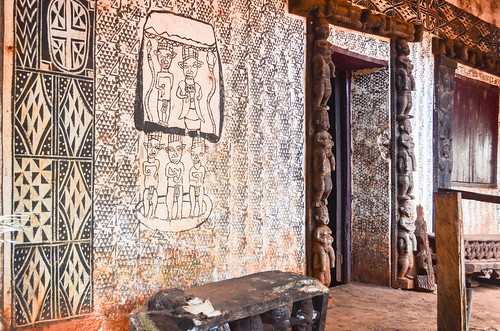
Stopping for such visits makes the trip more interesting but also significantly reduces our average daily mileage. Plus, the hills don’t help.
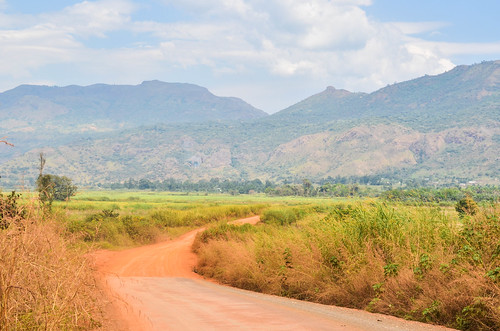
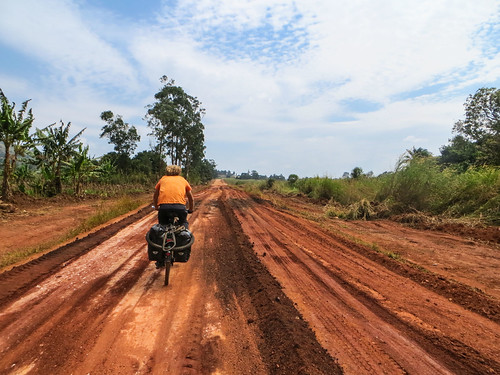
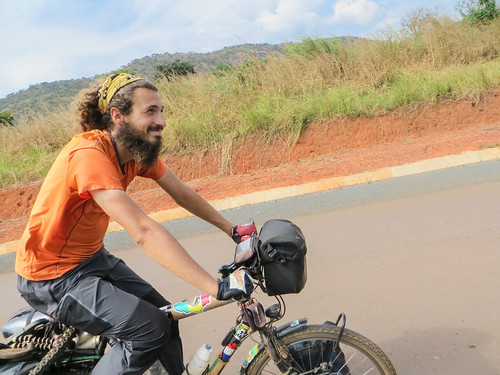
The climb to Jakiri is as steep as it used to be. Road works have changed position, so something is slowly happening. We stay for the night in Jakiri and dine in the lonely city center: the main crossroads has five lights and one man playing music. There is also a lady selling fufu and vegetables. A dinner friend explains with fun but seriousness the purpose of touring: “You must leave a trace in Africa. If you just pass through, without leaving your trace, it is pointless to come here“. By “trace”, he means a baby. “If I do France for three years or so, I can’t come home without leaving a baby with a French girl there. You must find yourself a Cameroonian petite and make a baby!“. Hum hum … it’s easy to say, easy to do, but …

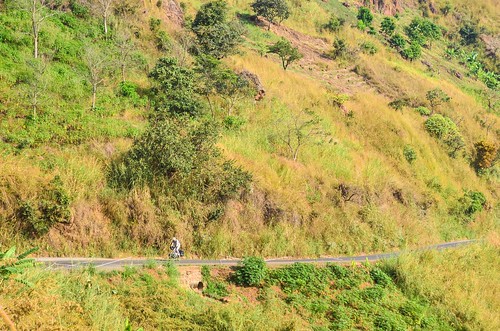
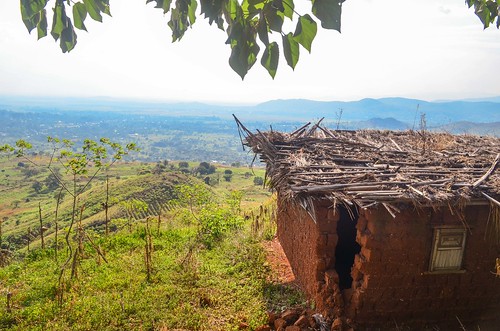
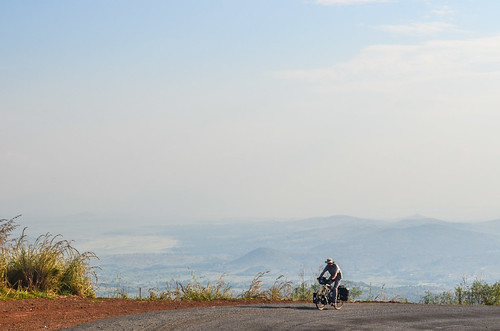
From Jakiri, heading towards Foumbam, we enter the Bamoun. The Bamoun is the area around the capital Foumbam. It was originally a kingdom (1394-1884), and now, part of Cameroon, it is called a sultanate, after King Njoya converted to Islam in 1897.
It makes the Bamoun a Muslim enclave, at a latitude below the invisible line where the prevalent religion changes from Islam to Christianity. The North in Cameroon and Nigeria is Muslim, the South is Christian.
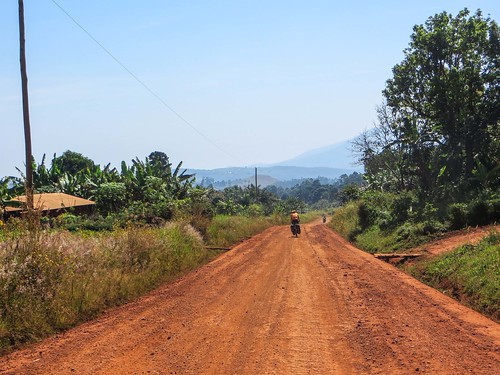
The downhill from Jakiri is very pleasant. The dirt road is not too bad and offers stunning views on the mountains. As usual, the red earth fits perfectly under the blue sky.
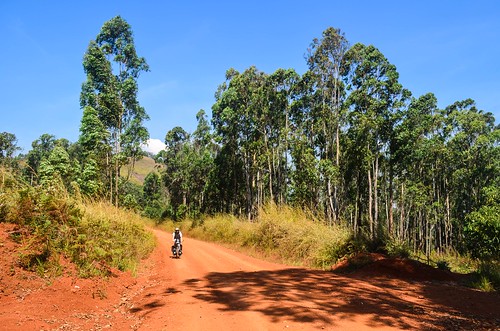
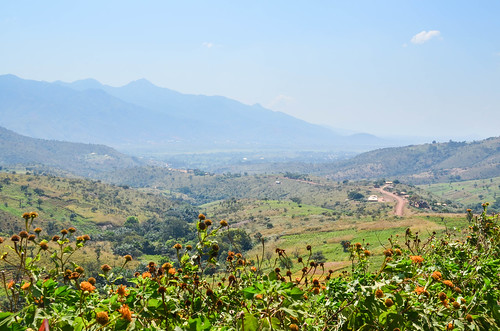
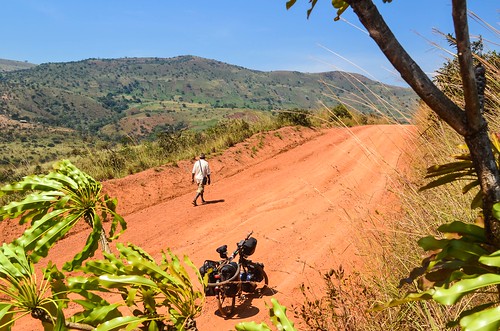


It has been no more than 20 kilometers since Jakiri and the people seem already Muslim. The language in the villages already switched from English to French. The invisible border is sharp. There is no electricity, no water, and very little traffic: it feels so quiet.
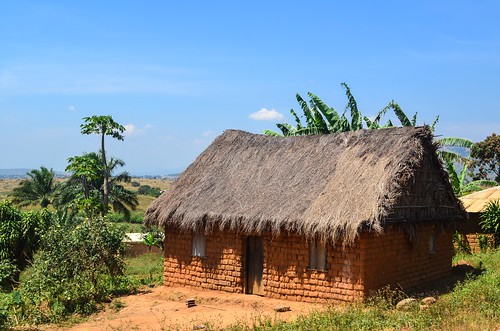
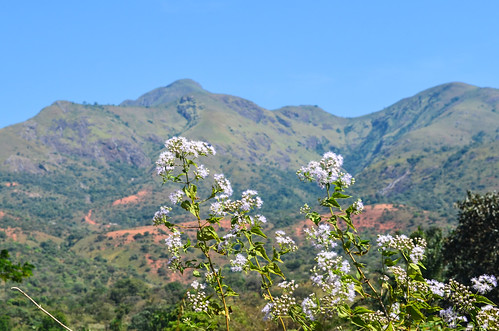
The red piste is very dusty. When a rare truck passes, we are quickly blinded by a cloud of red particles. Our bodies and faces are red. My shirt would be red too if it was not orange already.
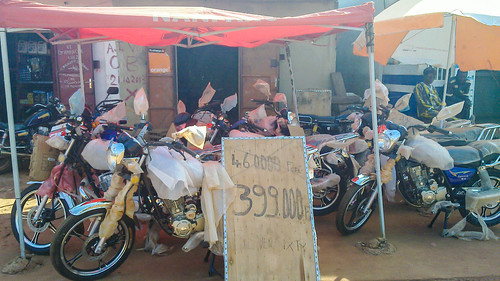
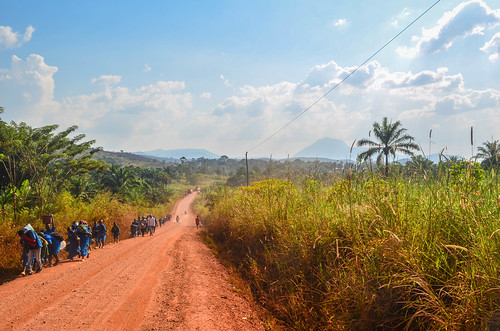
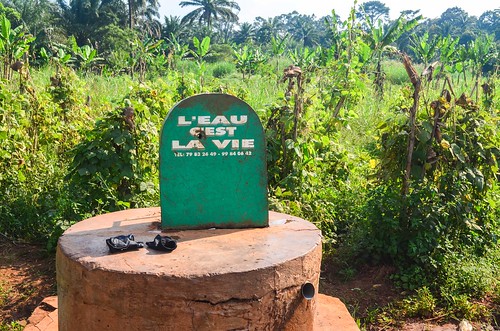
We spot many fires in mountains, here again for the fresh crops to grow better. A local tells us that if the proper clearing job is not performed before starting the fires, it can be dangerous. It happened that the herdsmen burnt down wooden electric poles. One has to watch for wooden bridges too … Our maps say we are cycling along a large dam lake, Lake Bamendjing, but we fail to see it.
About 20 km before Foumban, we change idea and direction. We don’t head anymore to the Bamoun capital and its palace, but stick to the beautiful dirt roads around the (still invisible) dam lake, and head to Foumbot instead. At a crossroads market, we see raffia worms, but unfortunately sold raw only.

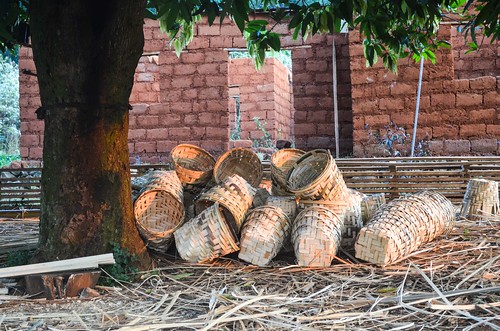
From now on, the road is not as nice, it can get very bumpy, but the scenery at sunset is worth it.
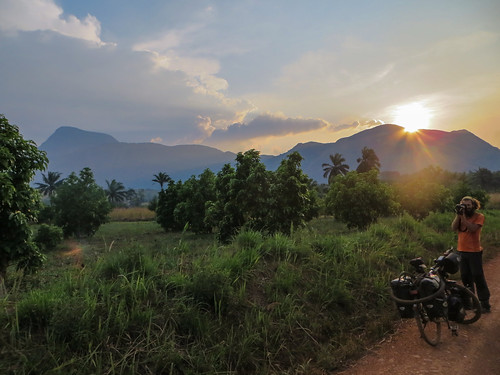
We want to camp by the lake, but it is late already and there is no suitable spot. We are quickly followed by the villagers of Koumengba, and the chief of the West district invites us to sleep in the salon of the chefferie, after a dinner of fufu jyama jyama (kassava leaf).
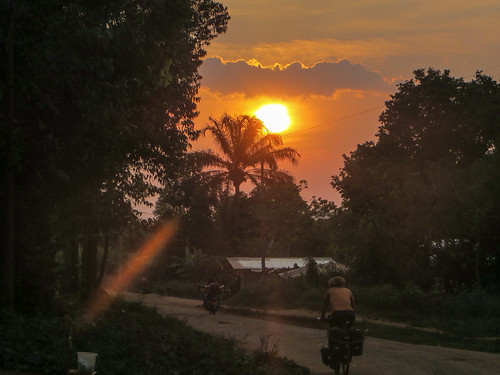
The chef de quartier Choui’bou prepares the café for breakfast. I am excited to drink real coffee because he is a coffee producer. However, he brings instant coffee in a box … the only coffee he produces leaves his chefferie raw and this is it. He doesn’t process the coffee beans. He shows us a bag of grounded coffee his producers’ union made, but it is only a small project hard to realize as they don’t own the machines.
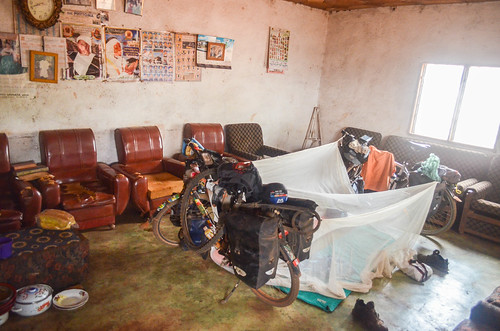
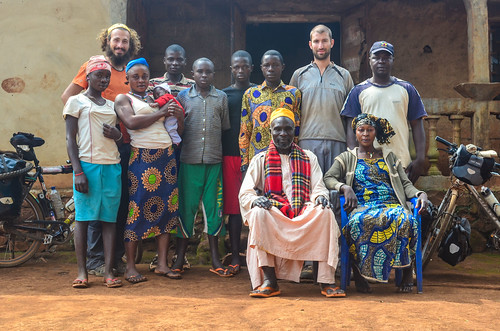
This is once again the sad side of Africa: we are on a land producing coffee beans but the only available beverage is instant coffee from a box made in Europe. Choui’bou tells us it is not easy to export the coffee: he must take it himself to Douala, with a rented vehicle for a 400 km ride, where he sells his bags directly on the port, for about 1000 CFA (1,5 €) per kilogram. I read that for cocoa production, buyers go down the rural roads to reach the producers, they don’t respect the government fixed buying prices, use rigged scales, and threaten the producers not to collect the harvest anymore. It seems for both cases that producers have no leverage against the buyers.
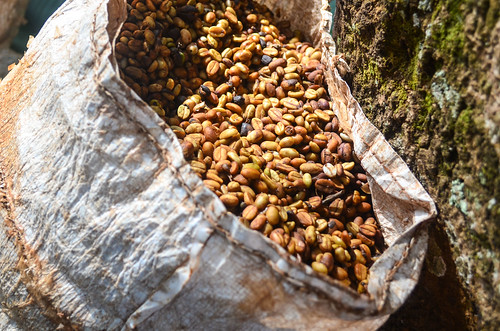
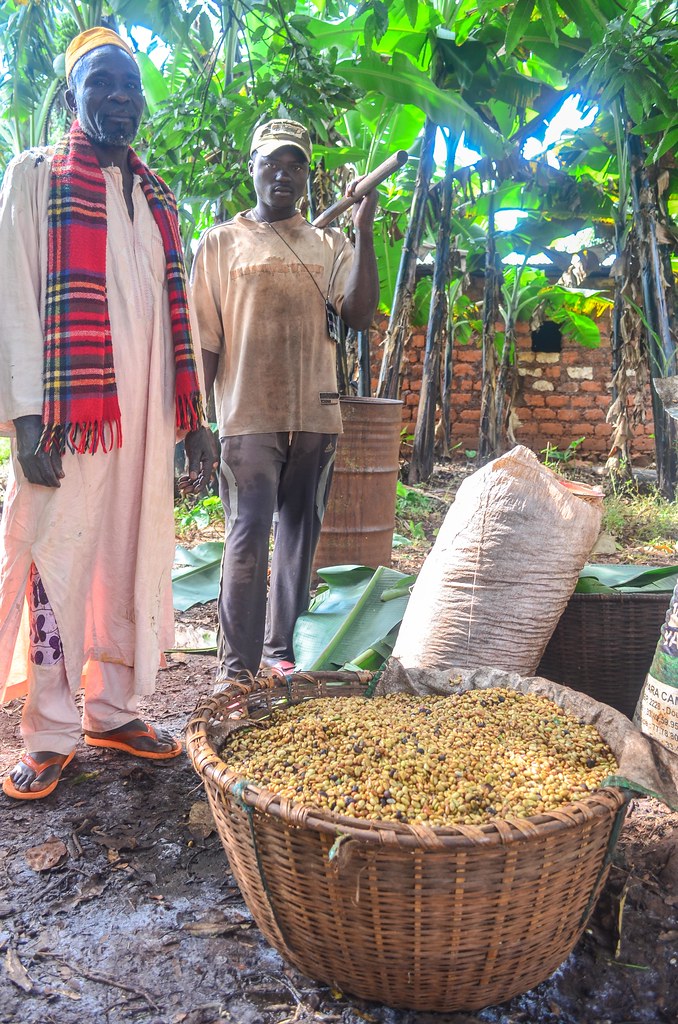
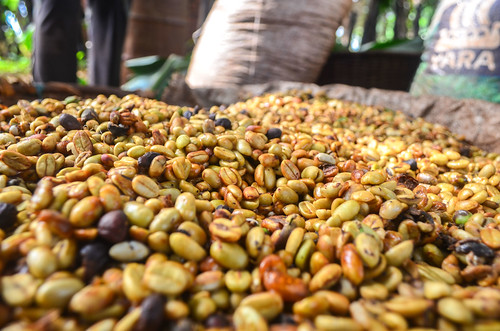
The chief is a member of the Muslim Bamoun kingdom. In the hall, there is a photo of him with the sultan of Foumbam going together to Mecca. He said the sultan got a small amount of money as indemnity for the dam works: the Bamendjing dam flooded a huge part of the sultanate and consequent arable land was lost. But now, there is nothing left of this money. Classic story.

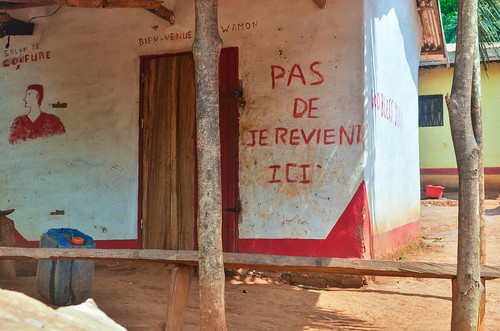
Today is still dusty but at least we finally see the Bamendjing lake, formed over the Noun river.
I hear some “eh le Blanc y’a rien pour moi?“, have useless discussions with people who think that “God sent us the White people, you are here to help us. We live in these conditions because the Whites didn’t help us yet!“, and continue on the now destroyed dirt road.
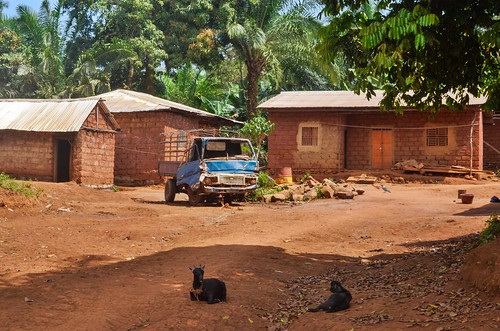
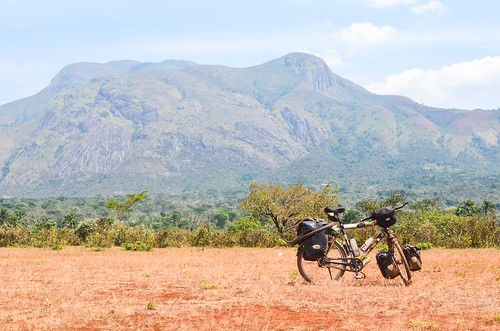
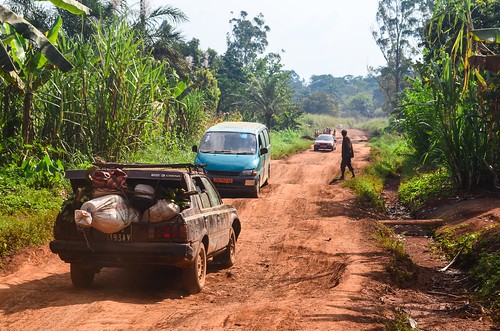


We ride the asphalt for the last 5 kilometers until Foumbot before going again for another dirt road, parallel to the national road, heading south towards Yaoundé. The dirt all over our clothes is not enough to make us return to the main road with the cars.
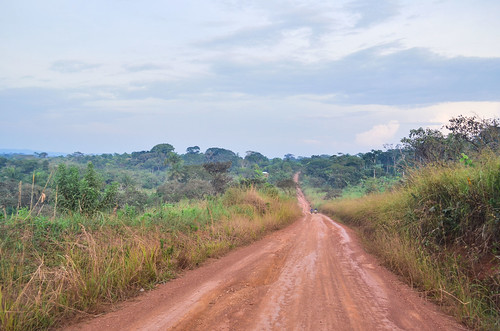
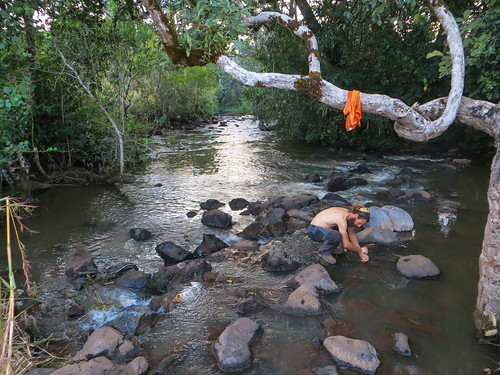
We end up camping in the school compound of Nkoutoulanden. There is a lot of grass but it is hard to find a spot that doesn’t smell poop. The kids must be doing all over the yard …





Salut! Je cherchais des photos de la région et je suis tombées sur cette page. Tes photos sont magnifiques! Je pars avec 3 amies à Kouoptamo (à quelques kilomètres au sud du Lac Bamendjing) pendant 1 mois pour un travail universitaire. Nous aurons surement l’occasion de voir un peu les alentours. Des endroits particuliers à recommander? ou des conseils à donner? Merci beaucoup!
tombée*
Thanks for all the pics,i like them particulary those from my native land Koumengba.Thanks so much guys.Hope you will come back again
Your pictures are so good. Have done the Bamenda-Nkambe-Sabongari-Magba-Foumban tour by road, not on a bike but in a car. It has such a wonderful landscape and beautiful rolling hills.
Once more thanks for the write up
Magnifiques photos, j’adore celle des trois vaches à contre jour ( dont 1 taureau ! ) et les brumes matinales ( ça te donne la pêche pour tte la journée ).
La mécanique tiendra t’elle jusqu’au Cap ?.
Merci! La mécanique a l’air d’aller. Si les pneus tiennent 5000 km de plus, tout est bon.